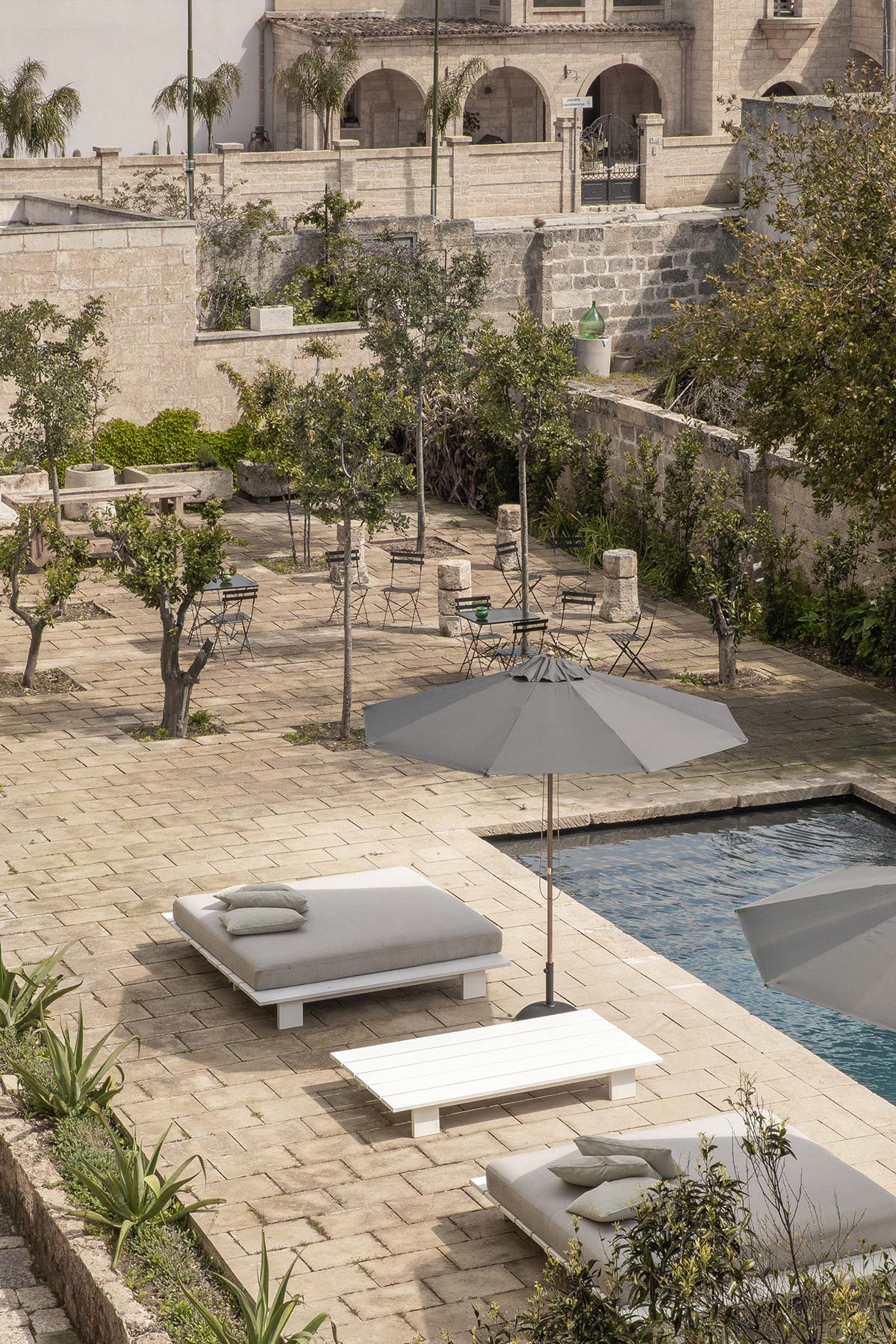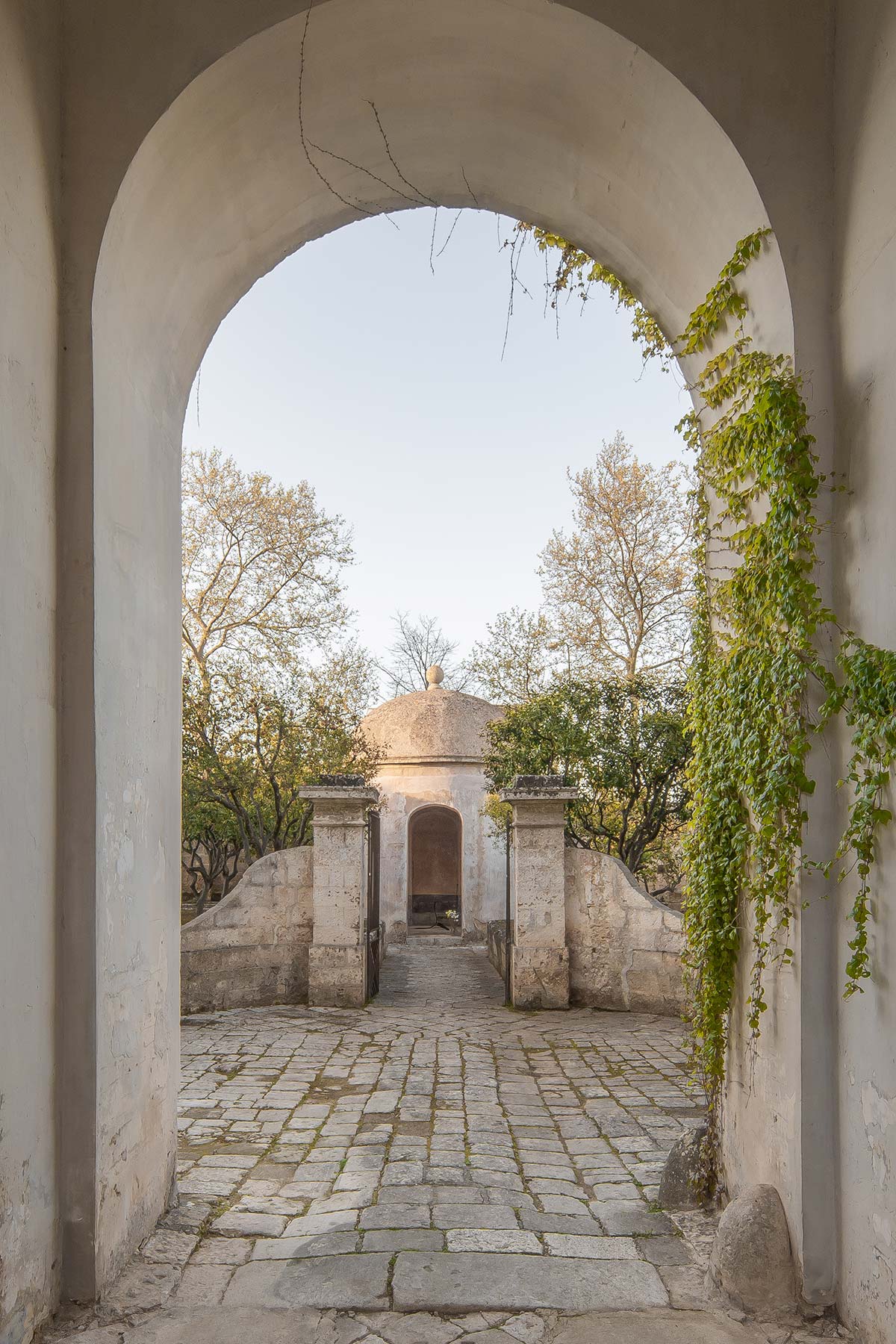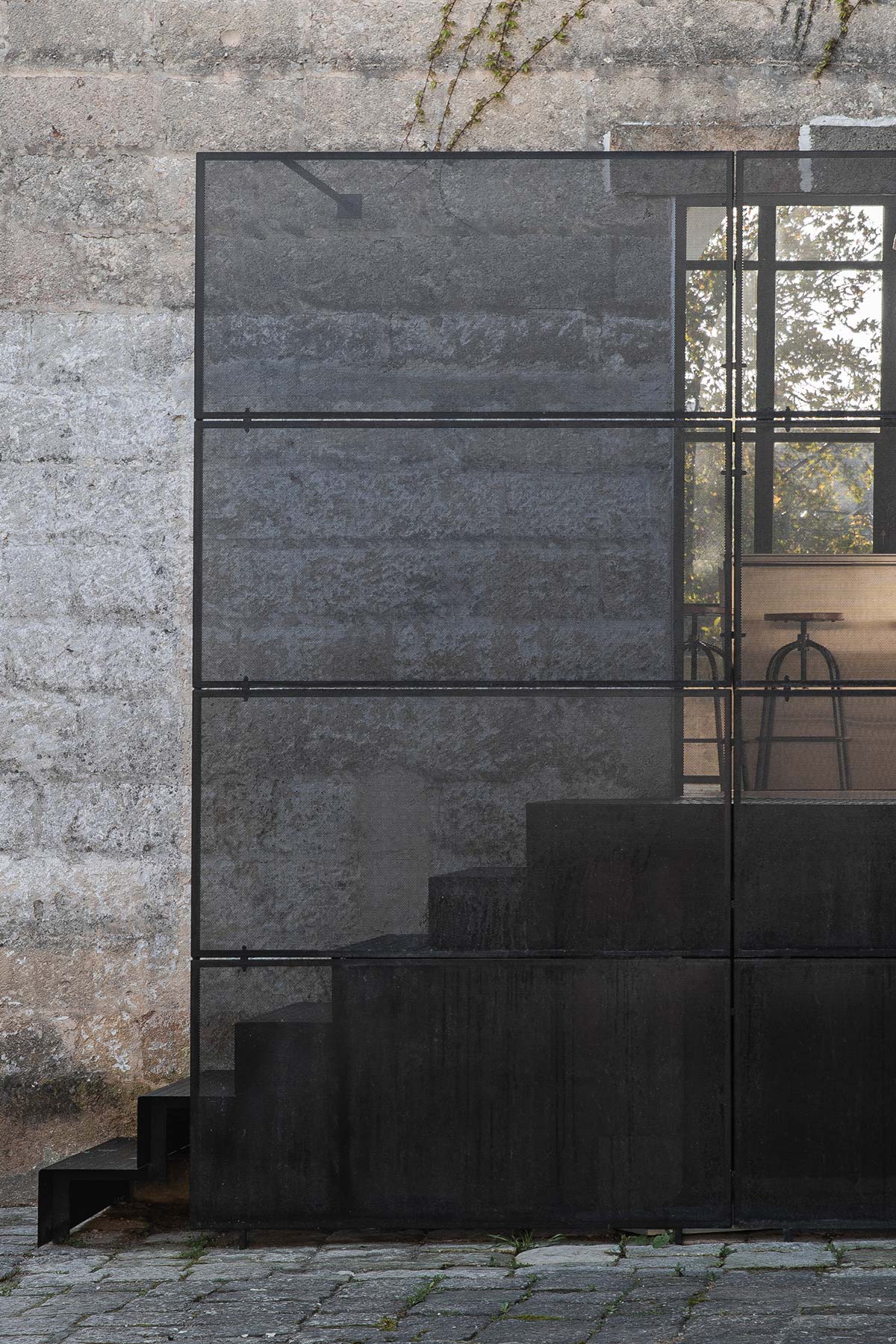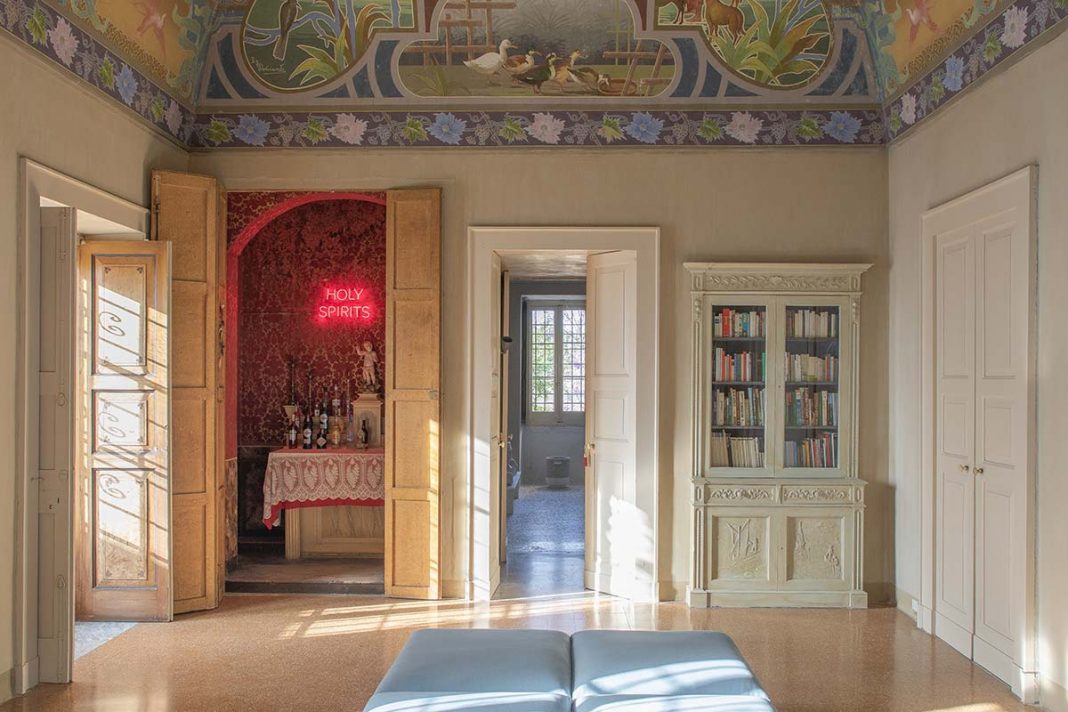DATA SHEET
Owners: Gabriele Salini and Francesco Petrucci
Hotel operator: GS Collection
Architectural design: Domenico Malinconico (19th century)
Restoration and interior design: Palomba Serafini Associati
Furnishings: vintage or custom pieces; Driade, Pomodone
Lighting: Flos, Ikea, Pallucco
Bathrooms: Flaminia, Zucchetti
Kitchen: Elmar
Photo credits: Renée Kemps
In the year of Italian unification, 1861, the local architect Domenico Malinconico designed this patrician villa in neoclassical style, incorporating courtyards and lush Mediterranean gardens. In a town of deep silence and stillness, stretching at the extremity of Puglia still untouched by conventional tourism, the setting is one of historical and morphological authenticity.



At Gagliano del Capo, right there were the land ends and the sea begins, the gaze swings in an obligatory sweep, before us and behind us. In that imposing volume charged with material culture and family identity, Francesco Petrucci – the last heir and a voracious collector of contemporary art – has decided together with his friend Gabriele Salini to open the doors to art lovers and travelers, giving rise to a hospitality concept that can accommodate all the aspects of the contemporary. Including site-specific works.

The Milan-based duo Ludovica + Roberto Palomba handled the architectural restoration and reorganization of the spaces, focusing on aesthetic and symbolic purification, the evocative force of subtraction as the metaphor of an absence/essence capable of stimulating the creative impulses of guest artists. As the architects explain, “the renovation sets out to underline the theme of detachment, to take these spaces back to an idea of non-inhabited places, no longer dense but emptied and liberated from their nature and their function, steeped in an original aesthetic linked to furnishings for everyday habitation. A few functional furnishing elements remain, recontextualized, in dialogue with the works of art on display, in a game of reflections that underline the sacred quality of absence.”
The large frontal living areas are used as shared exhibition spaces, while the back of the building contains nine suites, each different from the next, facing the outdoor pool next to a small orange grove and courtyards in Lecce stone. The nude walls, many of which reveal perceptible signs of the passage of time, reinforce the grandeur of the frescos on the vaulted ceilings and the original floor mosaics, while the monastic, hardly furnished spaces enhance the visual impact and expressive force of antique family portraits, contemporary works and installations that move on the blurry boundary between art and design. Decorative and functional purposes thus combine in the lightbox by Simon d’Exea, the lamps by Luigi Presicce, the stools by Nicolas Party, the sculpture by Roberto Cuoghi, the photographs of Pino Pascali shot by Claudio Abate, and then the garland by Eva Jospin, a lithograph by Carla Accardi or the installation of the shower, where an antique font descends from the six-meter ceiling into a large sculptural basin designed by Andrea Sala for the bathroom in the Royal Junior Suite, alongside double washstands by Ceramica Flaminia.



















